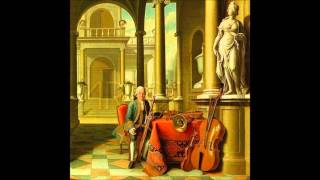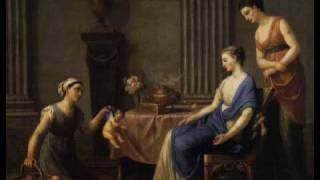Friday, 26 December, 2025г.
















Где искать: по сайтам Запорожской области, статьи, видео ролики
пример: покупка автомобиля в Запорожье
Handel - Concerto grosso No. 4 (Op. 3) in Fmajor, HWV 315 / Marc Minkowski
Georg Friedrich Händel (1685~1759)
- Concerti grossi, Op.3 (1734) -
Concerto No.4 in Fa maggiore, HWV 315
(per 2 Oboi, Archi e Basso Continuo)
I. Ouverture (Lentamente) - Allegro - (Lentamente) - 00:00
II. Andante - 05:51
III. Allegro - 07:44
IV. Minuetto: Allegro - 09:01
Les Musiciens du Louvre
Marc Minkowski (conductor)
It is unlikely that Handel took an active role in the publication of his Concerti Grossi, Op. 3, though the music contained therein is vintage Handel. In 1734, when they were published, their publisher, John Walsh, was essentially still producing pirate editions of Handel's works. But Handel had started take an interest in the non-operatic side of his career. Chamber music was gaining wider exposure and Handel - who always had an eye to the main chance - may have seen this as a way of compensating for the problems in his operatic career, as well as seeing a commercial opportunity. He took an active role in Walsh's next publication, the Op. 4 Organ Concerti. Handel probably did not choose Walsh as his official publisher; rather he tacitly recognised Walsh's pre-eminent position as the most successful pirate music publisher of his works. In Georgian England, copyright protection for composers was rather limited and not very well enforced.
The Concerti Grossi Op. 3 are rather a mixed bag of pieces from various parts of Handel's career. Number 1 may have been composed in Hanover as it includes two viola range parts in different clefs, something that links them to works by Venturini, a leading Hannoverian court musician. The attractive Concerto No. 2 was probably written for the orchestra at the Haymarket theatre in 1718/19 and uses movements from one version of the overture to the Brockes Passion. Concertos 3 and 5 are both arranged from music that Handel originally wrote for the anthems for Cannons, the home of the Duke of Chandos (the so-called 'Chandos Anthems'). The first two movements of no. 3 are arranged from this source and the last movement is based on a keyboard fugue from the same period - in an arrangement that may not even be Handel's. Concerto No. 5 is simply taken bodily from one of the Cannons' manuscripts - where it is called a sonata. No. 4 was originally the second overture to the opera Amadigi, performed in 1716. In the very first edition of the work, this concerto was replaced by another in the same key, of unknown provenance. This was soon corrected and all Walsh's later editions of the concerto include the familiar one.
The most problematic concerto is the last, where a single movement taken from a three movement concerto is attached to a second movement based on an organ concerto. Handel had split the first movement off from its siblings when he used it in 'Ottone'. This confusion of movements on Walsh's part probably reflects Handel's partial disengagement from the production of the publication. Walsh must have had access to Handel to get the requisite copies of the pieces, but Handel certainly did not oversee the results.
Теги:
유선빈 Georg Friedrich Handel G.F.Handel Opus-3 Concerto grosso No.4a major for two Oboes Oboe Strings and Basso Continuo The Orchestra concerto F-major Fmajor HWV315 Haendel Händel G.F.Haendel G.F.Händel Baroque Music French Overture Ouverture French Overture Française Ouverture Ouvertüre Overtura Ouvertura Marc Minkowski Les Musiciens Louvre Grenoble Historically informed performance period instruments
Похожие видео
Мой аккаунт


 У вашего броузера проблема в совместимости с HTML5
У вашего броузера проблема в совместимости с HTML5


